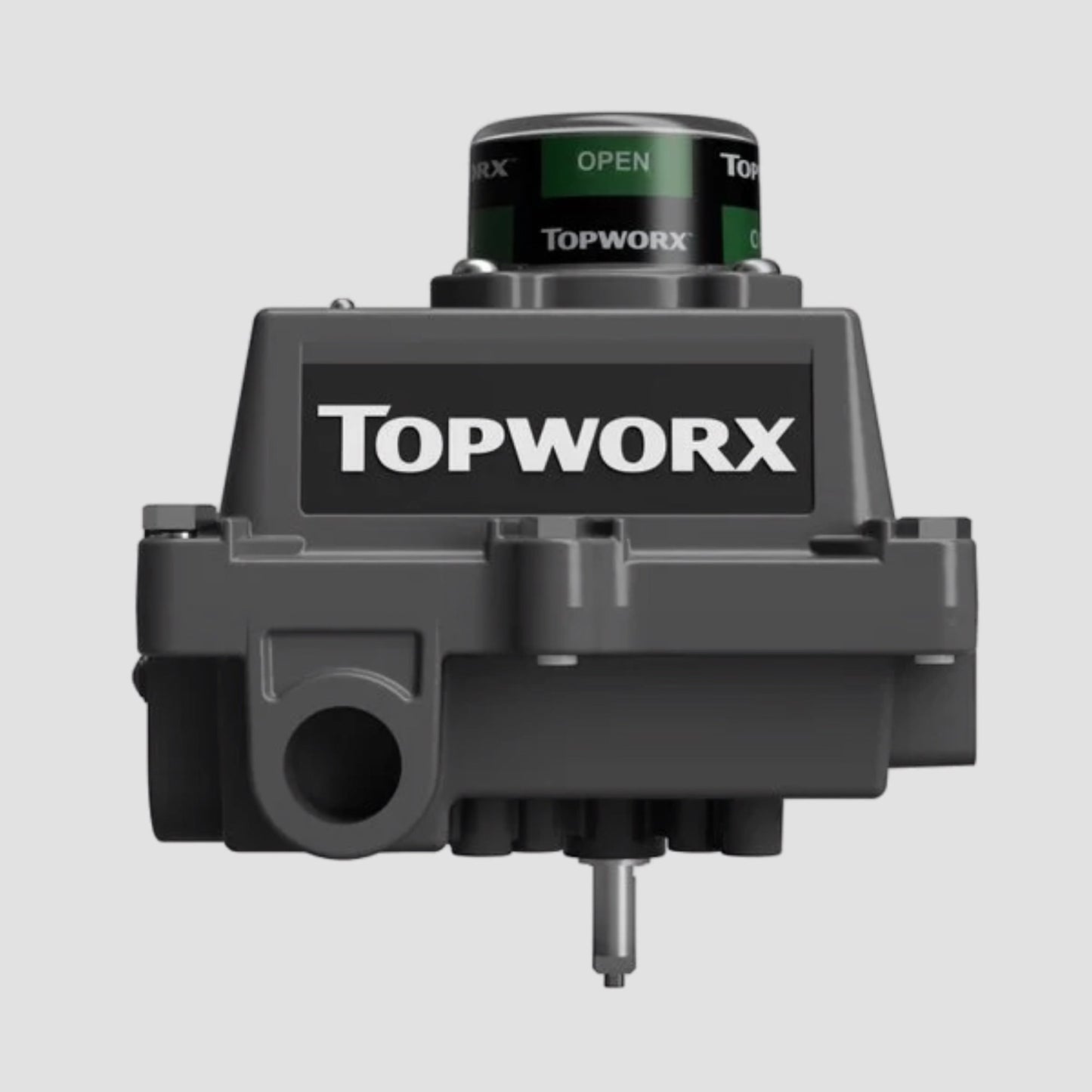Topworx Switchboxes
TopWorx Limit Switch Box DXP-0014NEB Valve Monitor
TopWorx Limit Switch Box DXP-0014NEB Valve Monitor
Couldn't load pickup availability
The TopWorx Limit Switch Box DXP-0014NEB Valve Monitor is a reliable valve monitoring solution designed for harsh and demanding environments. Engineered with a tropicalized aluminum DXP enclosure, this monitor offers exceptional resistance to corrosion, making it ideal for tropical and challenging conditions. With its explosion-proof/flame-proof certification, it ensures safe operation in hazardous areas, providing critical operational assurance where safety is paramount.
Equipped with a NAMUR 316 stainless steel shaft for robust durability, the DXP-0014NEB also features two ¾" NPT conduit entries for straightforward integration into existing setups. The Buna-N O-rings offer enhanced sealing properties, ensuring weather-tight and long-lasting performance. Its reliable visual display provides clear status indication, and this model includes no additional switch or pilot device for simpler applications.
Key Features
- Durable Enclosure: DXP tropicalized aluminum for corrosion resistance
- Explosion-proof/Flame-proof Rated: Certified for use in hazardous areas
- Shaft Material: NAMUR 316 stainless steel for added durability
- Visual Display: Equipped for clear status indication
- Conduit Entries: Dual ¾" NPT for ease of installation
- Sealing: Buna-N O-rings for weather-tight integrity
- Compact Design: No switches, spool valves, or pilots, designed for straightforward monitoring needs
Share

Enquire Online!
FAQ's
What is the difference between a valve and an actuator?
What types of actuators are available?
The main types of actuators are:
Pneumatic actuators – use compressed air for fast, reliable operation.
Electric actuators – use electrical power for precise control.
Hydraulic actuators – use fluid pressure for high-torque applications.
Each type offers unique advantages depending on the environment, media, and system control needs.
How do I choose the right actuator for my valve?
To select the correct actuator, consider:
Valve type and torque requirement
Power source available (air, electric, or hydraulic)
Operating environment (temperature, humidity, hazardous area)
Control signal type (on/off or modulating)
Matching actuator torque and compatibility with the valve’s ISO mounting ensures reliable performance.
What are the main types of valves used in automation?
The most common valves in automated systems include:
Ball valves – for tight shutoff and quick operation.
Butterfly valves – for larger flow control with compact design.
Globe valves – for precise throttling and flow regulation.
Check valves – to prevent backflow.
Gate valves – for full bore flow isolation.
What’s the difference between a double-acting and spring-return actuator?
Double-acting actuators use air (or power) to both open and close the valve.
Spring-return actuators use air to open (or close) the valve, and a built-in spring to automatically return it to a safe position when power or air is lost — ideal for fail-safe operation.
How often should valves and actuators be serviced?
Regular maintenance intervals depend on operating conditions, but a good rule of thumb is to inspect every 6–12 months.
This includes checking for leaks, lubrication, seal wear, and actuator responsiveness to prevent unexpected downtime.

